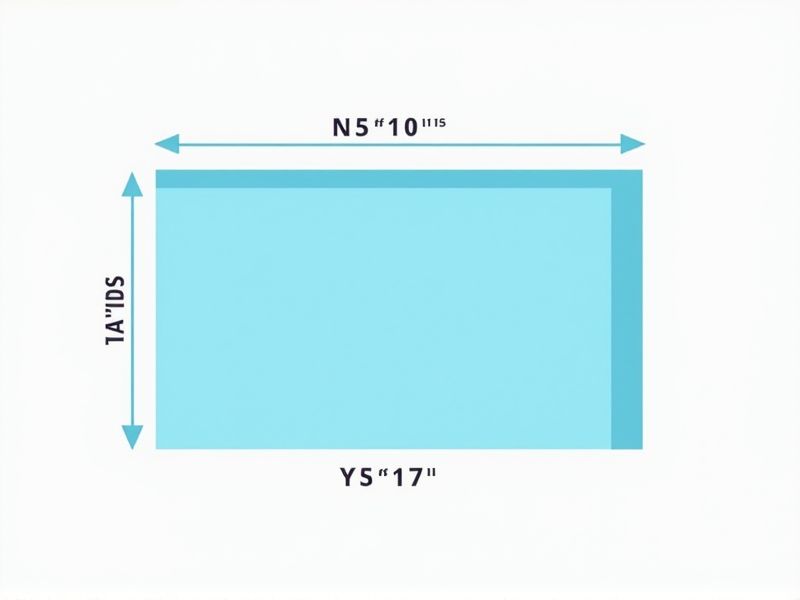
A standard swimming pool for international competitions, such as those held at the Olympics, measures 50 meters in length and 25 meters in width, with a minimum depth of 2 meters. For short-course competitions, pools are typically 25 meters long. If you're designing a pool for residential or recreational use, common dimensions might be around 10 meters by 5 meters, but these can vary widely. Knowing the intended use of your pool is essential, as this determines the best size, depth, and lane configuration for safe and enjoyable swimming experiences.
Length
The standard length for an Olympic swimming pool is 50 meters, allowing athletes to compete in events such as freestyle, breaststroke, and butterfly. In recreational facilities, common lengths for swimming pools vary, with many measuring 25 meters for lap swimming. For competitive swimming, both the 25-meter short course and the 50-meter long course formats provide different challenges for swimmers. Ensuring your pool meets these dimensions can enhance training opportunities and improve overall swimming performance.
Width
The standard width for an Olympic swimming pool is 25 meters, designed to facilitate competitive swimming events. For recreational pools, a commonly recommended width is 15 to 20 meters, allowing ample space for leisure activities and family gatherings. When constructing a swimming pool, consider that a wider design enhances swimmer safety and comfort, accommodating more users simultaneously. Your choice of width may also influence maintenance costs and the overall aesthetic appeal of the pool area.
Depth
The standard depth for residential swimming pools typically ranges from 3 to 5 feet, accommodating both casual swimmers and diving activities. For competitive pools, the minimum depth is set at 6.6 feet (2 meters) to ensure safety during high dives. A pool's depth can significantly affect water circulation and temperature retention; deeper pools may require more powerful pumps to maintain hygiene. When designing your pool, consider that varying depths can enhance user experience by providing shallow areas for children and deeper zones for diving or underwater activities.
Lane Width
The standard lane width for competitive swimming pools is typically set at 2.5 meters (approximately 8 feet), accommodating swimmers of varying skill levels. This width allows for a comfortable and safe experience while minimizing the chances of collisions. In contrast, recreational pools may have narrower lanes, often measuring around 2 meters (about 6.5 feet), which can affect the swimming experience. Ensuring that lane width meets these standards is crucial for maintaining a high-quality training environment and promoting efficient swimming techniques.
Starting Block Height
The standard height for swimming pool starting blocks is typically set at 0.75 to 1 meter above the water surface, ensuring optimal performance for competitive swimmers. This height not only facilitates powerful starts but also adheres to guidelines established by organizations such as FINA and USA Swimming. The blocks are often designed with a non-slip surface and may include adjustable features to accommodate different swimmer preferences. Ensuring compliance with these standards can significantly enhance both safety and athlete performance in swimming competitions.
Wall Padding
Wall padding in swimming pools is essential for enhancing safety and minimizing injuries. The recommended standard for pool wall padding thickness typically ranges from 1 to 3 inches, providing effective cushioning against accidental impacts. It is crucial to select materials that are water-resistant and UV-stabilized, ensuring durability and longevity even in harsh outdoor conditions. Regular inspections and maintenance of wall padding can contribute to a safer swimming environment, significantly reducing the risk of accidents.
Clearance Space
The standard clearance space around a swimming pool should ideally be a minimum of 4 feet (1.22 meters) on all sides to ensure safety and accessibility. This space allows for unobstructed movement, facilitating emergency exits and emergency rescues if necessary. In residential pools, proper clearance contributes to compliance with safety codes and makes maintenance tasks more manageable. Your swimming pool design should also consider factors like deck materials and landscaping to optimize the safety and functionality of the clearance area.
Lane Markings
Lane markings in swimming pools should adhere to specific standards to ensure safety and efficiency during competitions or practices. Typically, lanes are separated by ropes or lines that are 0.5 to 0.75 meters apart, with each lane marked by contrasting colors for enhanced visibility. The width of each lane should be at least 2.5 meters to provide ample space for swimmers, reducing the risk of collisions. Properly implemented lane markings not only facilitate organized swimming but also improve your overall experience in the water by allowing for clear navigation and performance tracking.
Pool Edge Height
The standard height for a swimming pool edge typically ranges from 30 to 60 centimeters above the surrounding deck. This height ensures safety by preventing accidental falls while also providing a suitable barrier for water splashes. To comply with building codes, many municipalities mandate specific heights that cater to both residential and commercial pools. When planning your pool, consider that a well-designed edge can enhance accessibility and aesthetic appeal while maintaining structural integrity.
Overflow Channel
An overflow channel is a crucial component of a swimming pool's design, ensuring efficient water circulation and maintaining water quality. This channel typically runs along the perimeter, allowing excess water to overflow, which helps in removing debris and contaminants effectively. The recommended width for an overflow channel ranges from 10 to 15 centimeters, facilitating proper water flow and drainage. By incorporating an overflow channel, you enhance the aesthetic appeal of the pool while ensuring compliance with safety standards and regulations.
